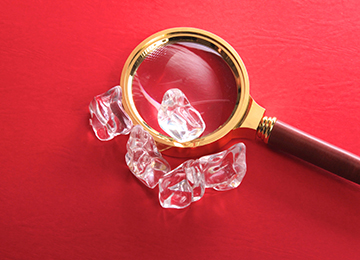
A diamond certificate, also called a diamond grading report, diamond dossier, or diamond quality document, is an official report created by a team of gemologists of a specific diamond grading laboratory. During the certification process, the diamond is evaluated, measured, and scrutinized using trained eyes, a jeweler’s loupe, a microscope, and other industry tools. A completed certificate includes an analysis of the diamond’s dimensions, clarity, color, polish, symmetry, and other individual characteristics. Many round diamonds will also include a cut grade on the report. A diamond certificate is a very useful tool for identifying a stone.
Although diamonds have been sought after and admired for thousands of years, only at the beginning of the 20th century did chemistry and other sciences advance to the point that objective, scientific grading of diamonds and other gemstones was made possible. The oldest gemological organization is the Gemological Institute of America, or GIA, founded in 1931 in Los Angeles, California.
Since the GIA’s founding, other organizations have been created to meet rising worldwide demand for diamond certification. These include: AGS (American Gemological Society), HRD (Hoge Raad Voor Diamant; Diamond High Council), PGS (Professional Gem Sciences), EGL (European Gemological Institute) and the IGI (International Gemological Institute). Each of these labs follow a precise criteria and method of grading loose diamonds, all operating within a high set of parameters, in regards to grading a diamond’s attributes and dimensions. The laboratory that is held in the highest regard by the diamond industry is the Gemological Institute of America. GIA’s standards for grading have set the bar for all other gemological laboratories, making it the most trusted and respected name in gemological laboratories.
